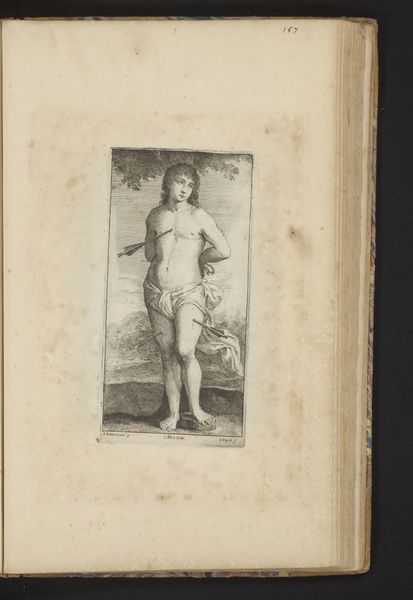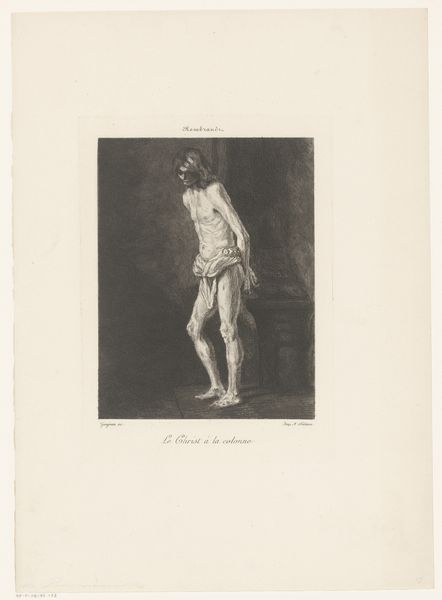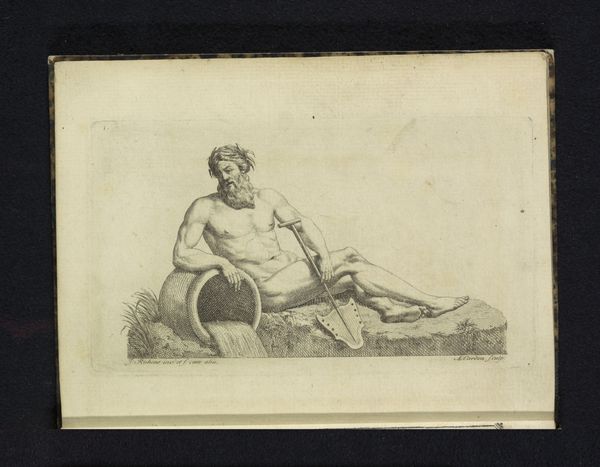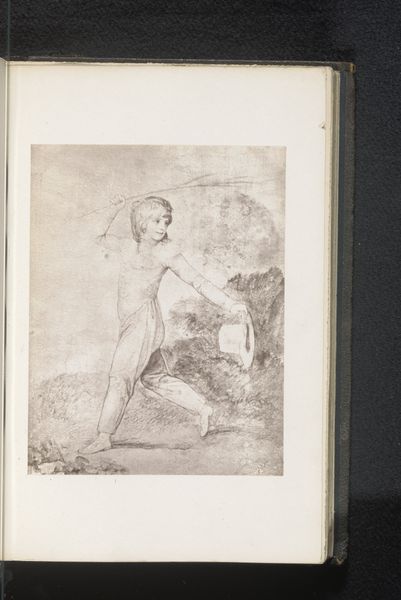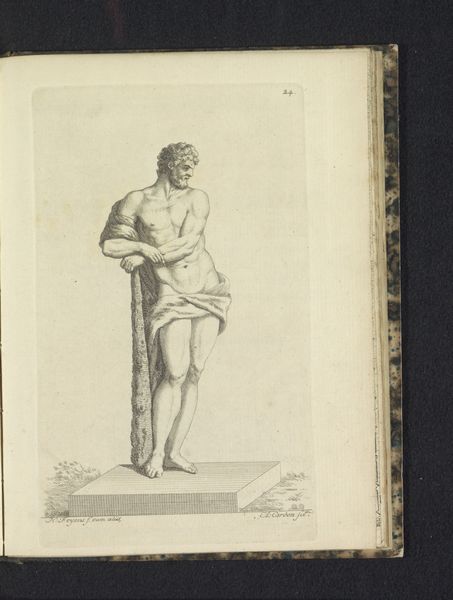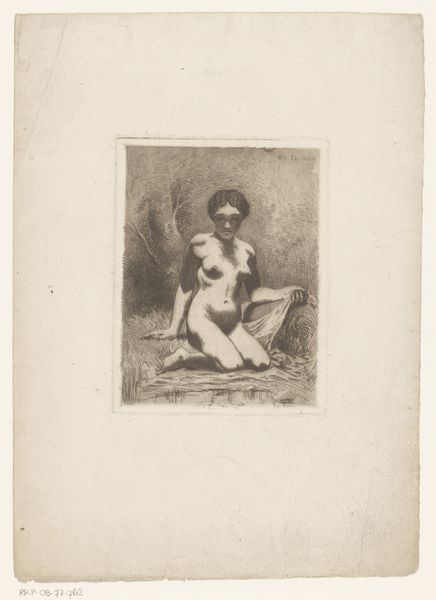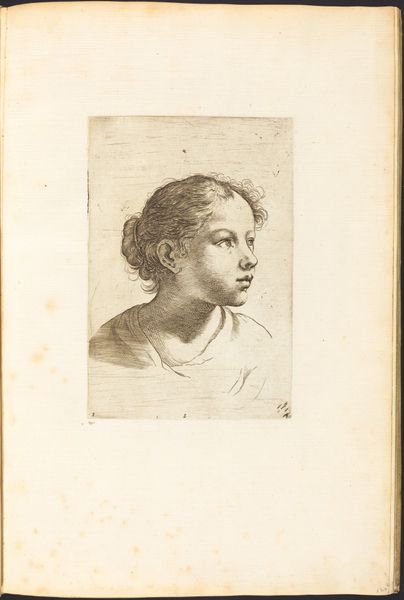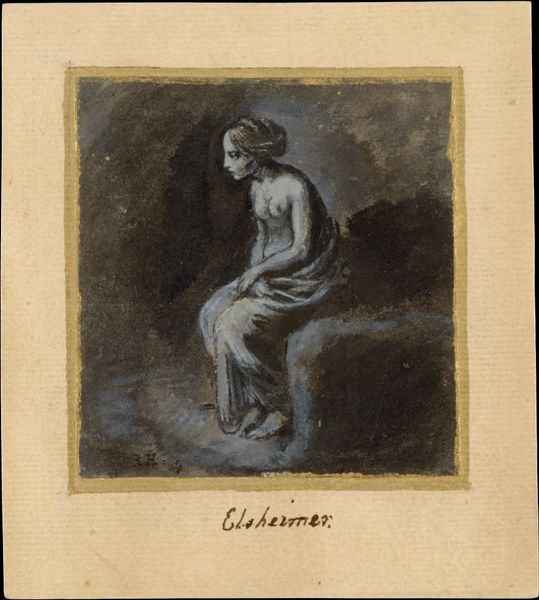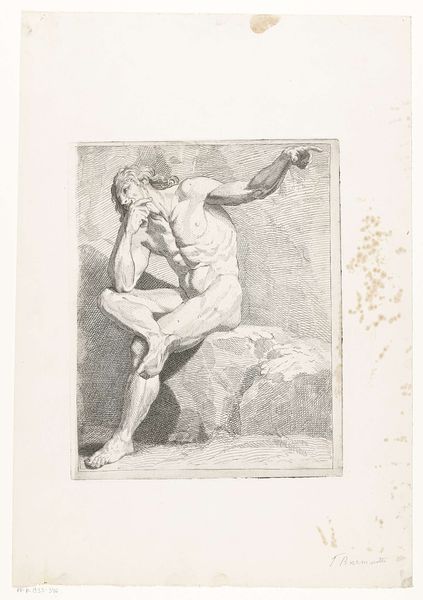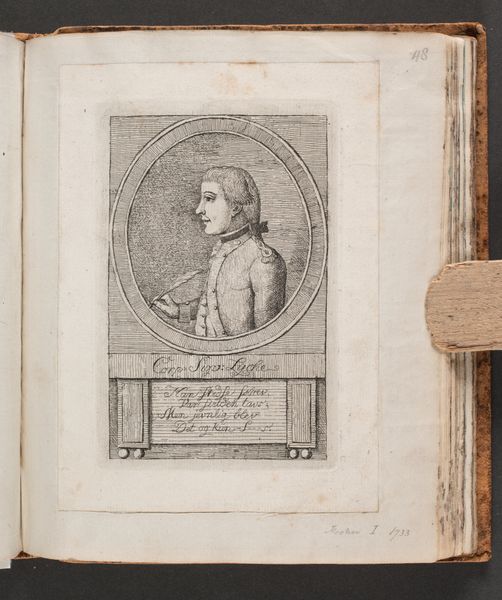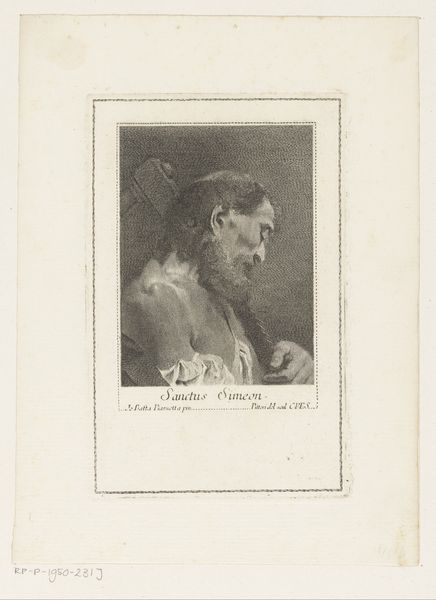
print, engraving
#
portrait
#
baroque
# print
#
figuration
#
nude
#
engraving
Dimensions: height 113 mm, width 82 mm
Copyright: Rijks Museum: Open Domain
Editor: Here we have Lucas Vorsterman the Younger's "Boetvaardige Petrus," an engraving from 1660 currently housed in the Rijksmuseum. There's something almost defiant in his averted gaze despite the vulnerability of his nudity. What layers am I missing? How do you read this work? Curator: This image, while seemingly a religious portrait, speaks volumes about power, vulnerability, and representation during the Baroque era. The portrayal of Peter, often seen as a symbol of repentance, begs the question: who gets to control the narrative of atonement? And what does the artistic choice to present him nude signify in relation to guilt, shame, and societal expectations? Editor: It seems like the image is intended to convey sincerity. Is there some tension between displaying contrition in a genuine way versus satisfying public expectations? Curator: Precisely. Consider the historical context: the Baroque period was marked by religious and political upheaval. Images like this were carefully constructed to project an image of piety but also reinforce societal norms regarding gender, faith, and penance. Is this figure an actual display of grief, or an orchestration of an idealised masculinity in the context of religious failing? Think of Caravaggio’s representations of male figures… Editor: So, this image can also be about image and performance… Thank you, that helps me see this through a whole different lens! Curator: Always question the assumed intent, especially within the confines of the visual politics of religion. What are we, as viewers, complicit in reinforcing when we passively accept an image's supposedly singular interpretation?
Comments
No comments
Be the first to comment and join the conversation on the ultimate creative platform.
